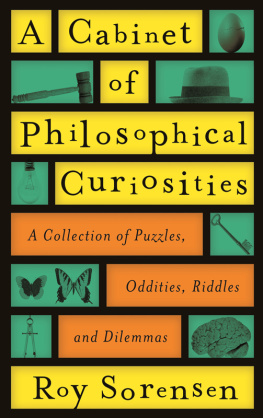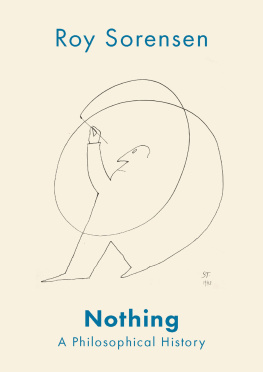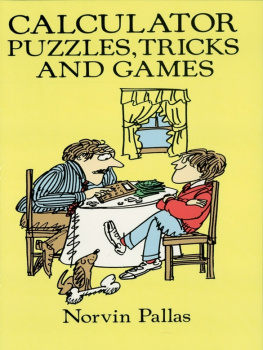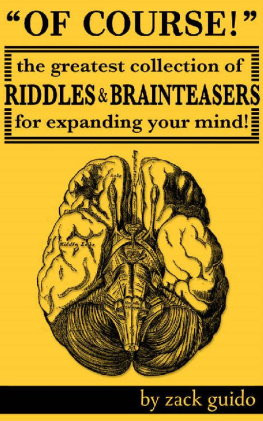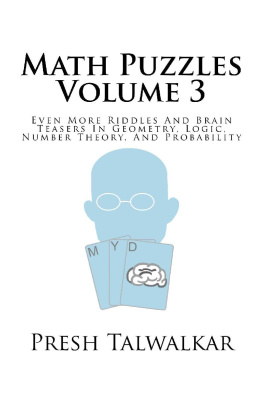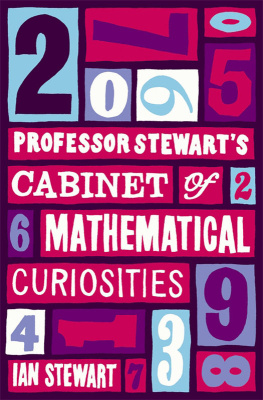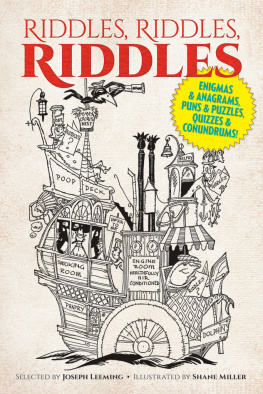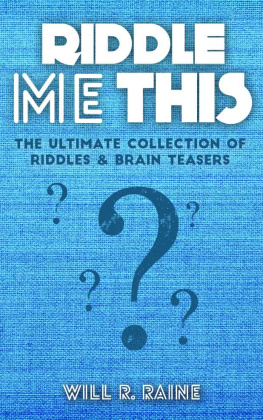A Cabinet of Philosophical Curiosities
ROY SORENSEN never told you that he is the son of Ted Sorensen, President Kennedys speech writer and confidant. For it is not true. Roy Sorensen is a professor of philosophy at Washington University in St. Louis. He is the author of Seeing Dark Things; A Brief History of the Paradox; Thought Experiments; and Blindspots.
By the same author
Blindspots
Thought Experiments
Pseudo-Problems
Vagueness and Contradiction
A Brief History of the Paradox
Seeing Dark Things
A Cabinet of Philosophical Curiosities
A Collection of Puzzles, Oddities, Riddles and Dilemmas
Roy Sorensen

First published in Great Britain in 2016 by
PROFILE BOOKS LTD
3 Holford Yard
Bevin Way
London WC1X 9HD
www.profilebooks.com
Copyright Roy Sorensen, 2016
The moral right of the author has been asserted.
All rights reserved. Without limiting the rights under copyright reserved above, no part of this publication may be reproduced, stored or introduced into a retrieval system, or transmitted, in any form or by any means (electronic, mechanical, photocopying, recording or otherwise), without the prior written permission of both the copyright owner and the publisher of this book.
A CIP catalogue record for this book is available from the British Library.
eISBN 978 1 84765 925 5
Dedication
To
My Broken Arm
I am a better starter than finisher. For wont of endings, this book became late, Late, LATE!
After my right arm broke, I could type s-1 -o-w-1 -y with my left hand.
The lessons taught by my broken arm began with the Emergency Room poster No head injury is too trivial to be ignored. The sentence is intended to be read as: However trivial a head injury is, it should not be ignored. But what the sentence really means is the opposite: However trivial a head injury is, it should be ignored. After all, the warning has the same syntax as: No missile is too small to be banned.
If you only have a broken arm, do not bring this reversal to the attention of the nurses. They will take the wrong kind of interest. Soon you will be holding your head very still in a computerised tomography scanner.
After surgery, my arm was paralysed for a day. This gave me a phantom limb and an eerie appreciation of Horatio Nelsons argument for immortality. In 1797, the British admiral was wounded in his right arm. After amputation, he vividly experienced the presence of his arm, a limb that he could feel but could no longer see. Lord Nelson reasoned that if an arm can persist after being annihilated, so can the whole person.
My broken limb outlived my phantom limb. It taught me how to be a lefty in a world that is subtly right-handed and less subtly two-handed. Like a good teacher, my broken arm made the novel familiar and the familiar novel.
Introduction
I build up castles.
I tear down mountains.
I make some men blind,
I help others to see.

A great quantity is said to be without number. An offended mathematician, Archimedes, believed this confused our inability to number the objects with an objective absence of number. The Roman numerals of his day abetted this confusion. In the The Sand Reckoner Archimedes developed another notation that enabled him to estimate the number of grains of sand in the universe. Now suppose another sand reckoner claims to have learned the exact number of grains.  .)
.)
Suppose everything is made up of atoms
Lewis Carroll subliminated his philosophical interests in whimsical dialogues and silly syllogisms:
Men over 5 feet high are numerous.
Men over 10 feet high are not numerous.
Therefore men over 10 feet high are not over 5 feet high.

This book has numerous riddles such as the above. They reflect a philosophers interest in logic and language, history and mathematics. The puzzles evolved from a habit I copied from Charles Darwin. He was impressed by how quickly he forgot objections to his theories. Darwin took to writing them down promptly in notebooks.
Psychologists support Darwins policy by asking you to continue the sequence 2, 4, 6, You guess 8, 10, 12. They congratulate you, Right! But what is the rule for continuing the sequence? You announce the sequence is just the ascending even numbers. Sorry, that is not the rule generating the numbers. Would you like try again?
You try a more complicated hypothesis. You test by asking whether another triplet of numbers is in the sequence. The good news is that, yes those particular numbers are part of the sequence. The bad news is that, once again, your hypothesised rule is mistaken. The good news/bad news cycle continues until you reverse your strategy of seeking to verify your hypotheses. You must instead try to falsify your hypotheses.
The rule intended by the psychologist is: 2, 4, 6, then the numbers after 6. This floods the search space with confirming instances. The rule is difficult to discover because we test our hypotheses by seeking confirmations rather than refutations. One motive for this confirmation bias is that we are fond of our hypotheses. We do not look for bad news. Even when we get counterevidence, we protect our pet theories by forgetting failures and exaggerating successes.
Confirmation bias is highly confirmed! When I asked one lecturer whether there were any counterexamples, she could not think of any. But then again, she sheepishly admitted, this could be because she never tried to refute the principle that we are biased towards confirming hypotheses. Then the psychologist brightened up, Hey, that proves my point!
Nevertheless, the anomaly collector should include anomalous anomalies. The paradoxes of confirmation theory show how a theory can be disconfirmed by combining data that is separately confirming. In Conform to Confound I discuss examples that conform to a generalisation and yet disconfirm it. There is even hope for the inheritor in the Charles Dana Gibson cartoon:
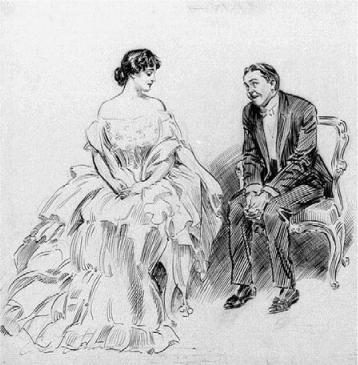
Cousin Kate: Now that you are well off, Charles, you mustnt let them say of you, a fool and his money are soon parted. Charles: No, you bet I wont; Ill show them that Im an exception to the rule.
Philosophers of science and historians of science have disconcerting ironies that do not make it into the pious methodology sections of science textbooks.
Psychologists focus on the confirmation bias we harbour towards our own hypotheses. We are not invested in the theories of others. Indeed, children go through a counter-suggestible phase. Told Nobody is perfect, one little girl in Sunday School silently pointed up.
Lawyers make a living generating counterexamples. In response to the retaliatory principle an eye for an eye and a tooth for tooth, William Blackstone (17231780) queried, What if a two-eyed man knocks out the eye of a one-eyed man?
Since we enjoy counterexampling our adversaries, we can counter confirmation bias by imagining someone else has come up with the principle. This is the method of autosadism, a term I picked up from a rental car agent.
Even with my nurturing, most of the anomalies that made it into storage perished from neglect. However, a minority took on a life of their own.
Next page
